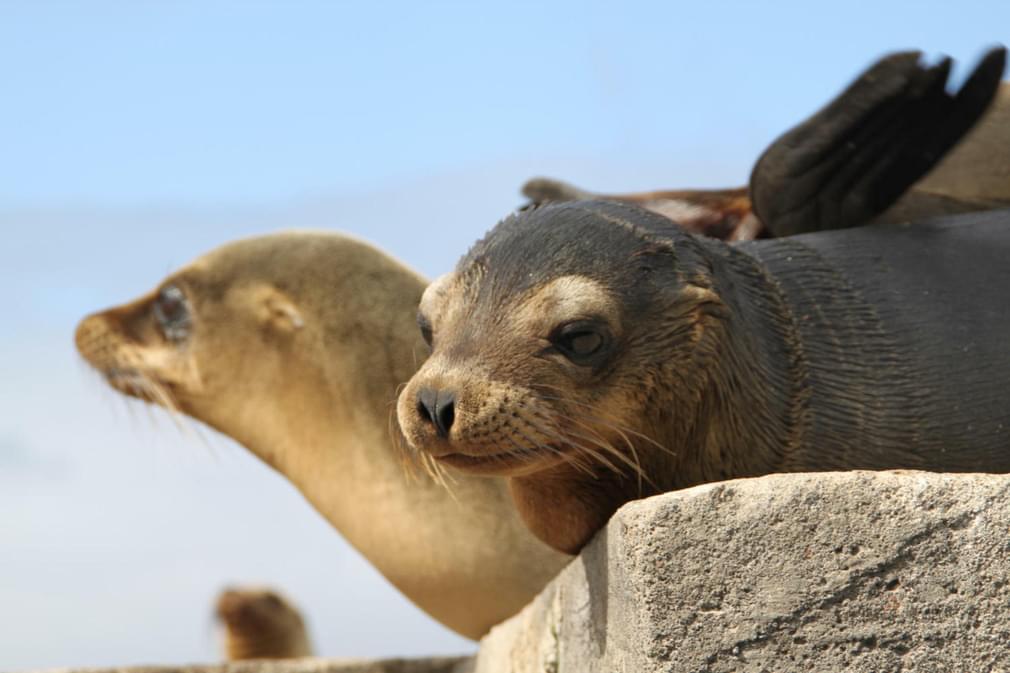Amazing facts about the Galapagos

Enjoy our series of fascinating yet mildly useless facts about the Galapagos Islands and their inhabitants.
Why Boobies are cross-eyed
Above the water Boobies are a little bit cross-eyed which is really part of what makes them so endearing. This is because their eyesite is really designed for use underwater where their eyesite is perfect.
Boobies dive-bomb into the sea to catch fish, and very good at it they are too.
In addition, their wonderful mating ritual involves long periods of stamping, dancing, preening and posturing. The act itself lasts but a second or two, repeated up to 40 times a day!
Waved Albatrosses
The entire world population of Waved Albatross nests on Espanola Island from May to December.
Darwin's tortoises
Darwin didn't just come to take scientific samples home, he also had a take-away of giant tortoise.
Giant tortoises proved to be the ultimate sailor's provision since they could be kept on their backs in the hold of a ship survive for up to a year without food or drink.
Darwin himself took something like 30 of the creatures away on the Beagle to snack on during the rest of his voyage.
Darwin's finches
Darwin failed to spot the differences between the 14 different species of giant tortoise (11 survive to this day, 3 are extinct).
He did notice that the same birds had different shaped beaks on different islands. This led him along the path of evolutionary theory as the finches had developed beaks shaped in function of their primary foodstuffs - some breaking nuts, others eating fruits, etc.
It's hard to believe he didn't spot the differences in the giant tortoises first.
Galapagos Penguins
Are the only penguins living in the northern hemisphere.
OK, the Galapagos straddle the equator so the penguins aren't very far inside the north but they are there.
Marine Iguanas
Are the only lizard in the world to go into the water, willingly at least.
Marine iguanas are basically land iguanas which have evolved to forage underwater. When food was short on land, they began to forage for seaweed.
Over time they have developed long sharp claws to help them tear up the seaweed. They have also developed the ability to swim and dive.
Remarkably they have also evolved black skin. The seaweed is hard for them to digest so they really need to cook the seaweed first. They do this by eating it, coming out of the water and laying down flat on the black lava to let the warm rocks cook the contents of their stomachs. Their black skin absorbs the heat of the sun more effectively and helps the process along.
They also lay on top of one another, again to help warm up that seaweed.
One thing the marine iguana has not evolved are effective blocks on its nostrils. This means that when it dives, it gets water in its nose. Just like you or I, when Marine iguanas come out of the water, they start to sneeze.
Flightless cormorants
Next to the marine iguanas on Fernandina Island is a colony of flightless cormorant.
These extraordinary looking birds literally shed the use of their wings in the absence of any predators on land.
Our Ecuador holidays Get in touch Subscribe to The Pothole
The Pothole is Pura Aventura's popular monthly email. We share what we love, what interests us and what we find challenging. And we don't Photoshop out the bits everyone else does. We like to think our considered opinions provide food for thought, and will sometimes put a smile on your face. They've even been known to make people cry. You can click here to subscribe and, naturally, unsubscribe at any time.
The Pothole is Pura Aventura's popular monthly email. We share what we love, what interests us and what we find challenging. And we don't Photoshop out the bits everyone else does. We like to think our considered opinions provide food for thought, and will sometimes put a smile on your face. They've even been known to make people cry. You can click here to subscribe and, naturally, unsubscribe at any time.









